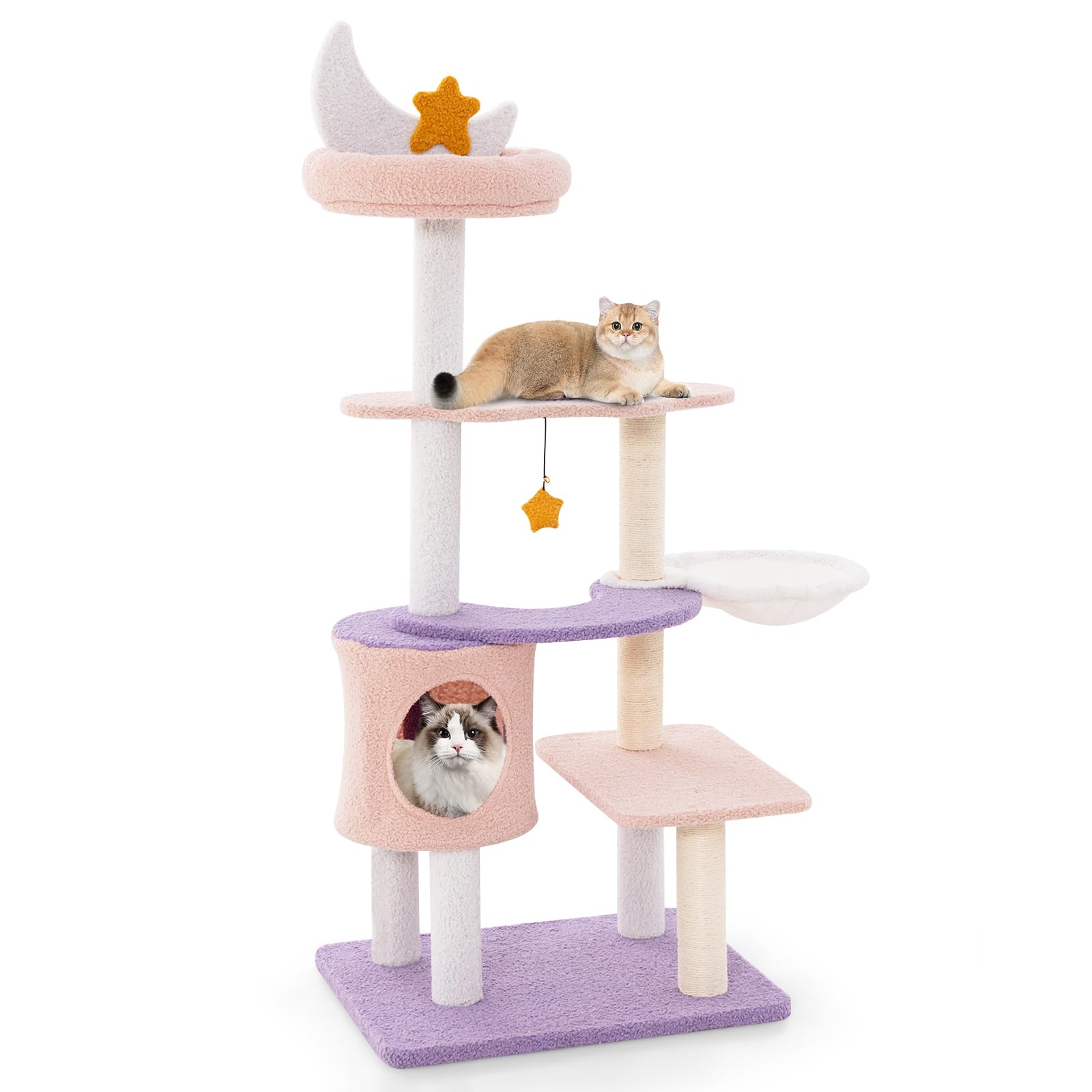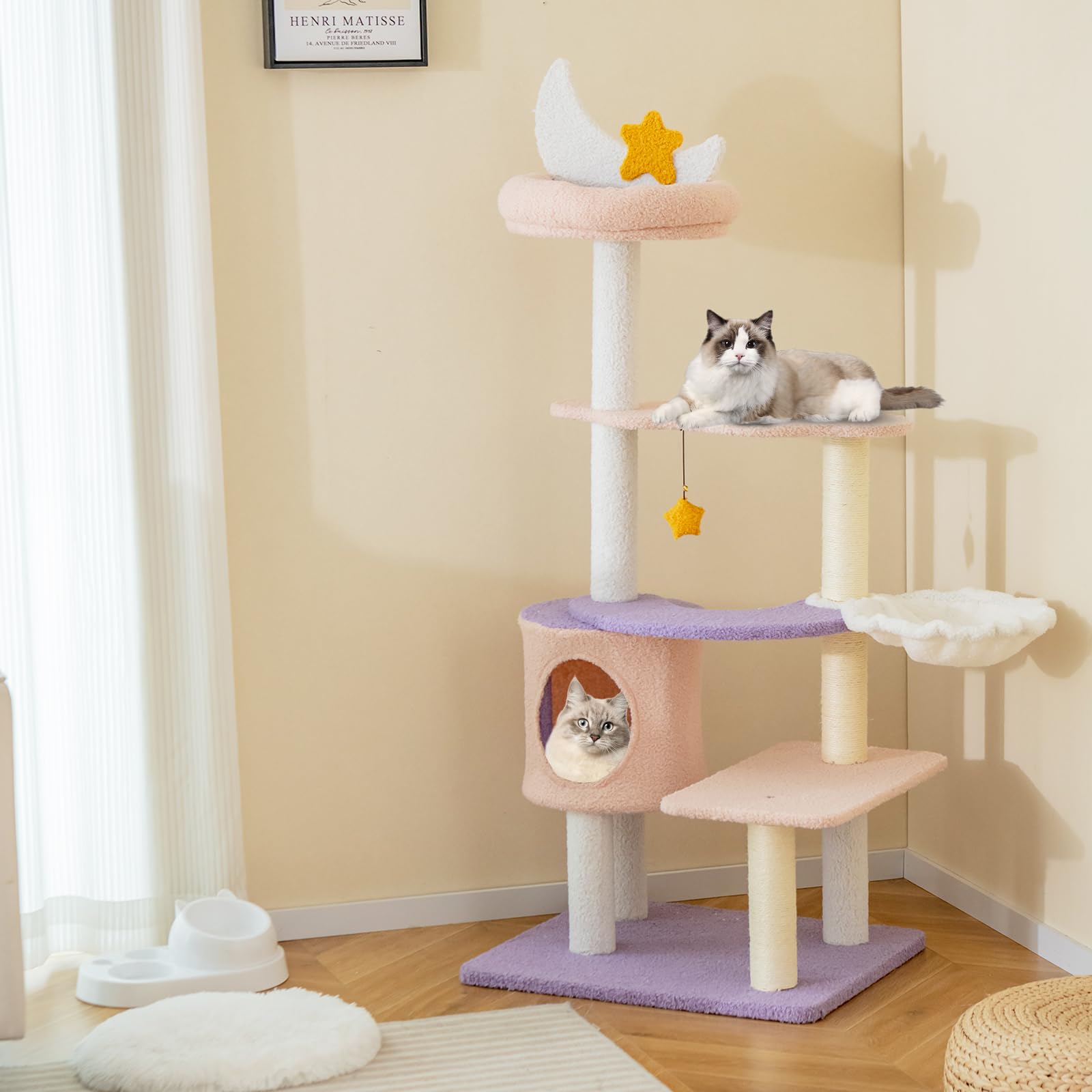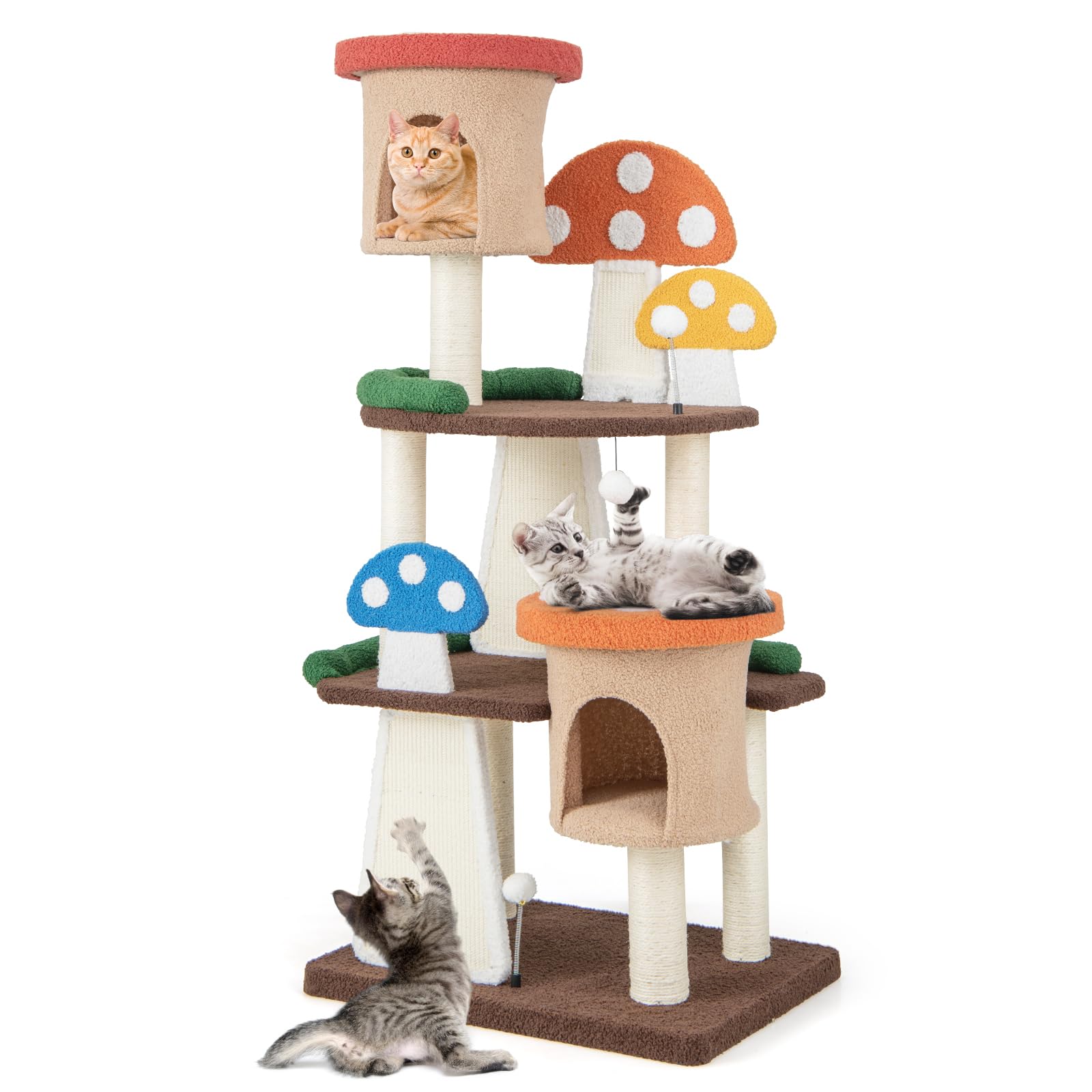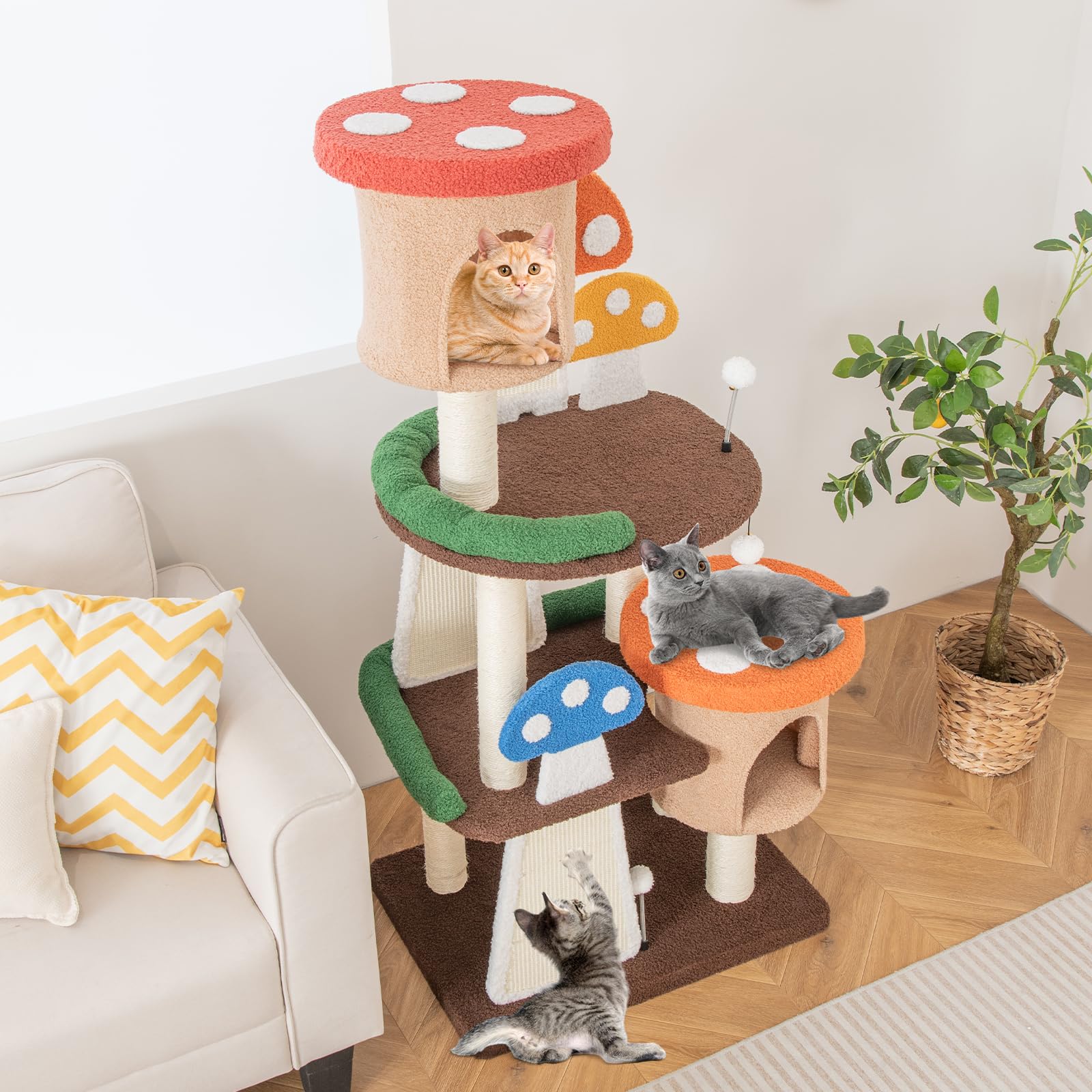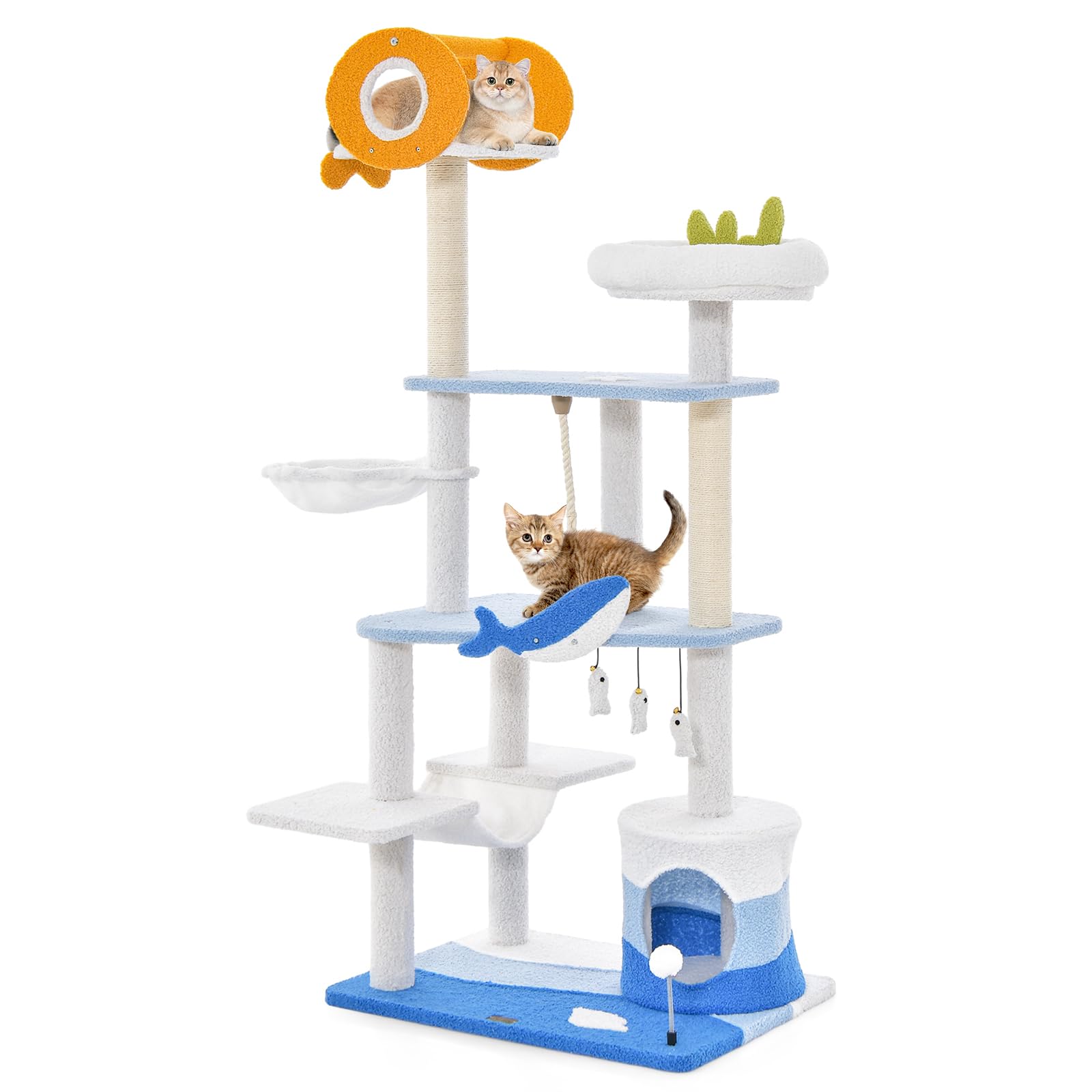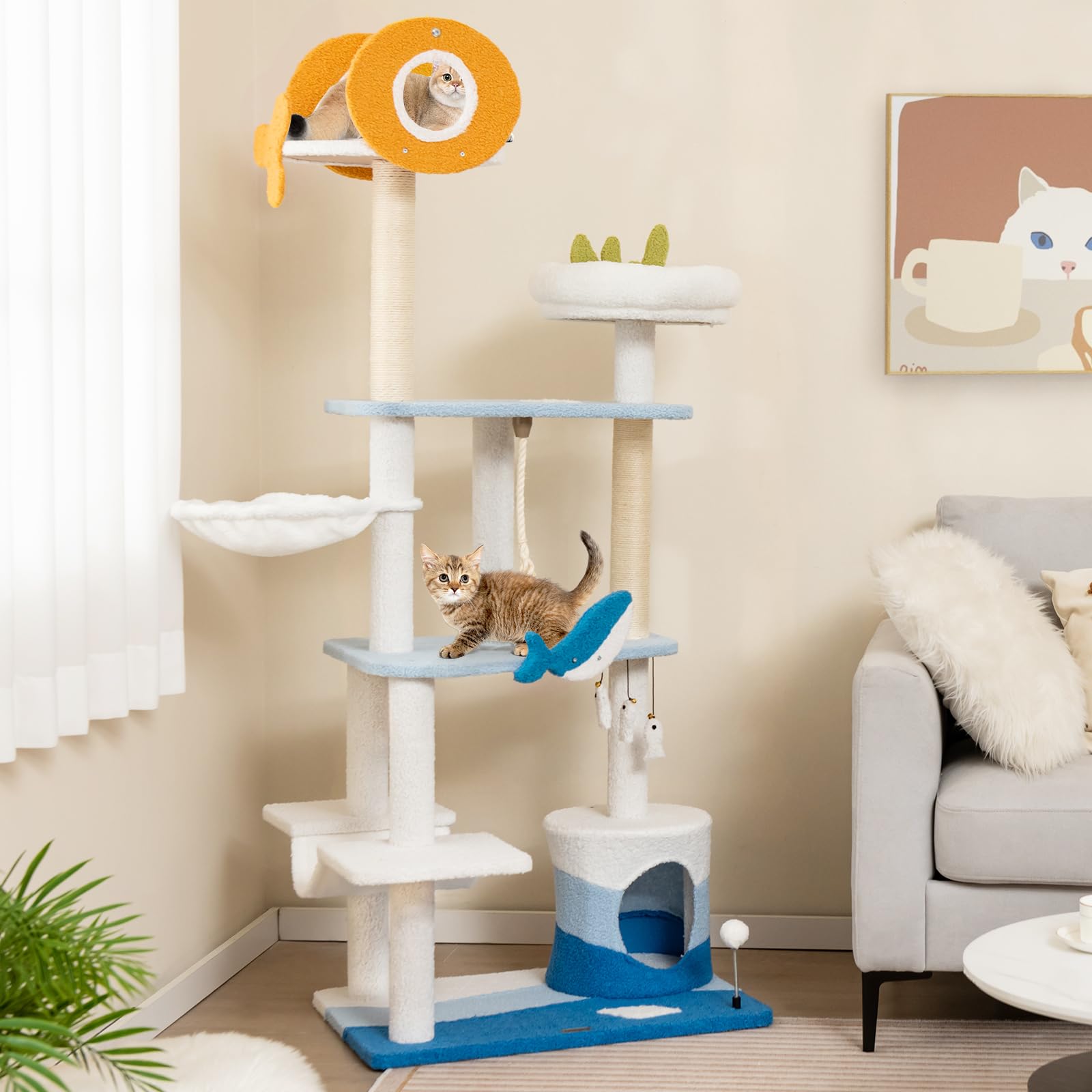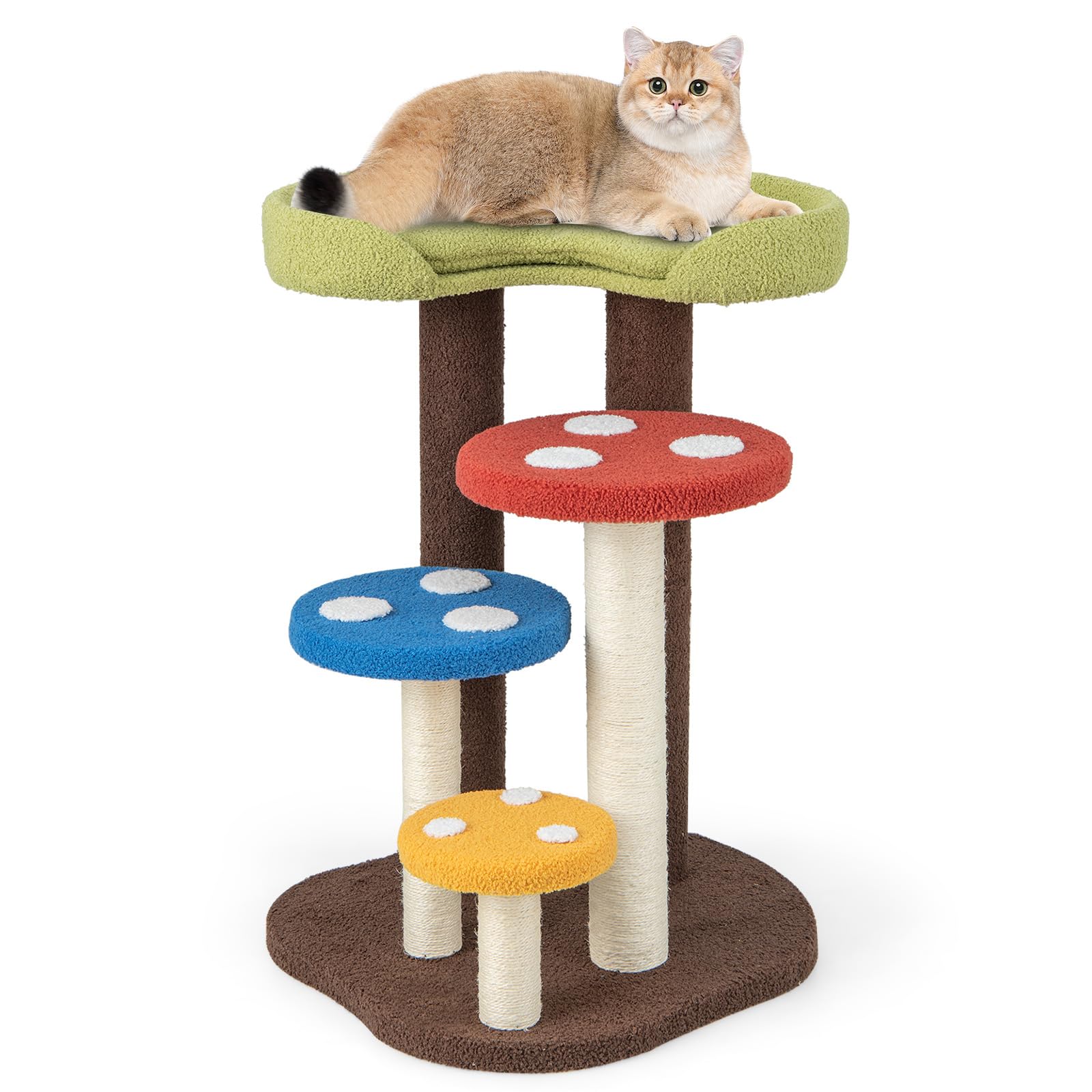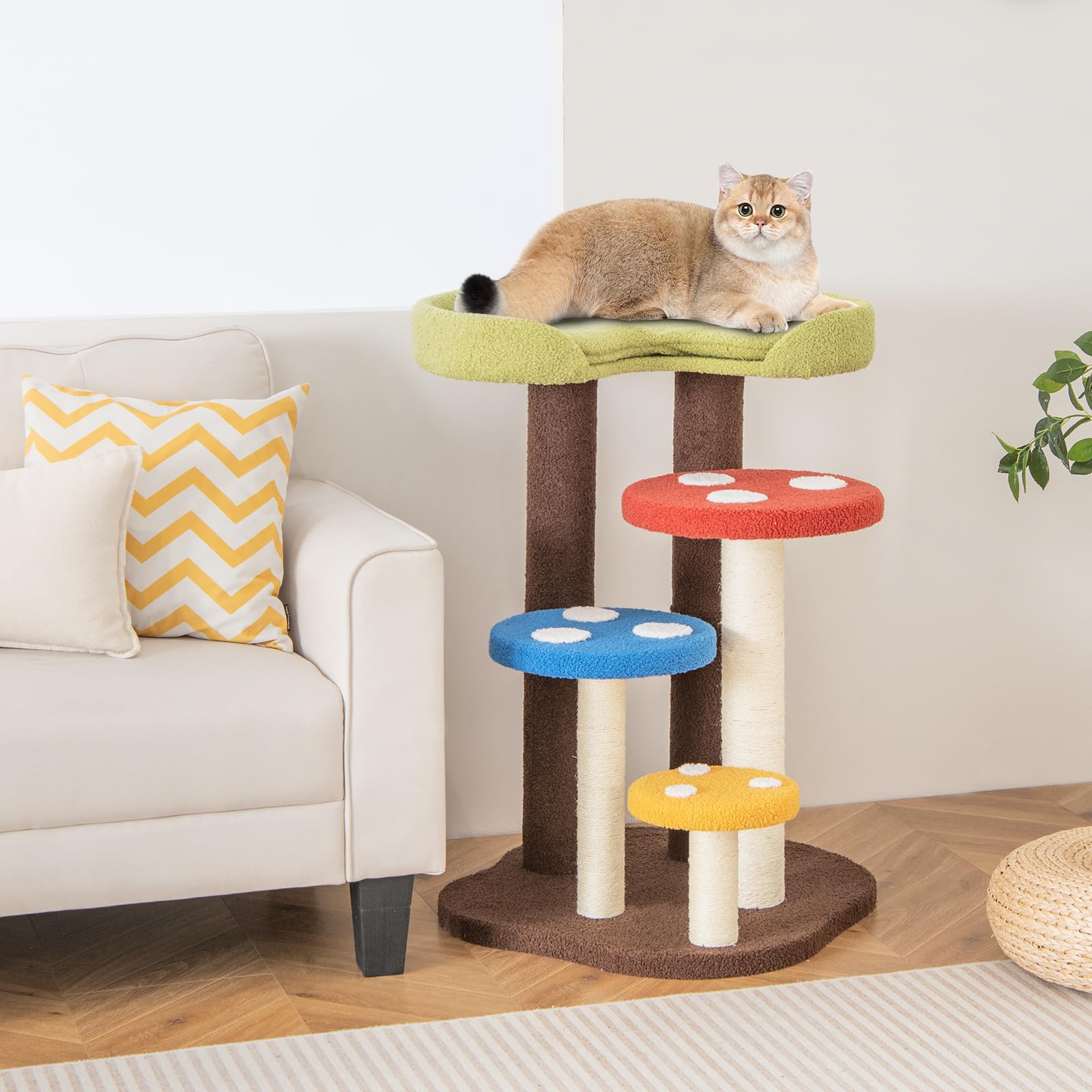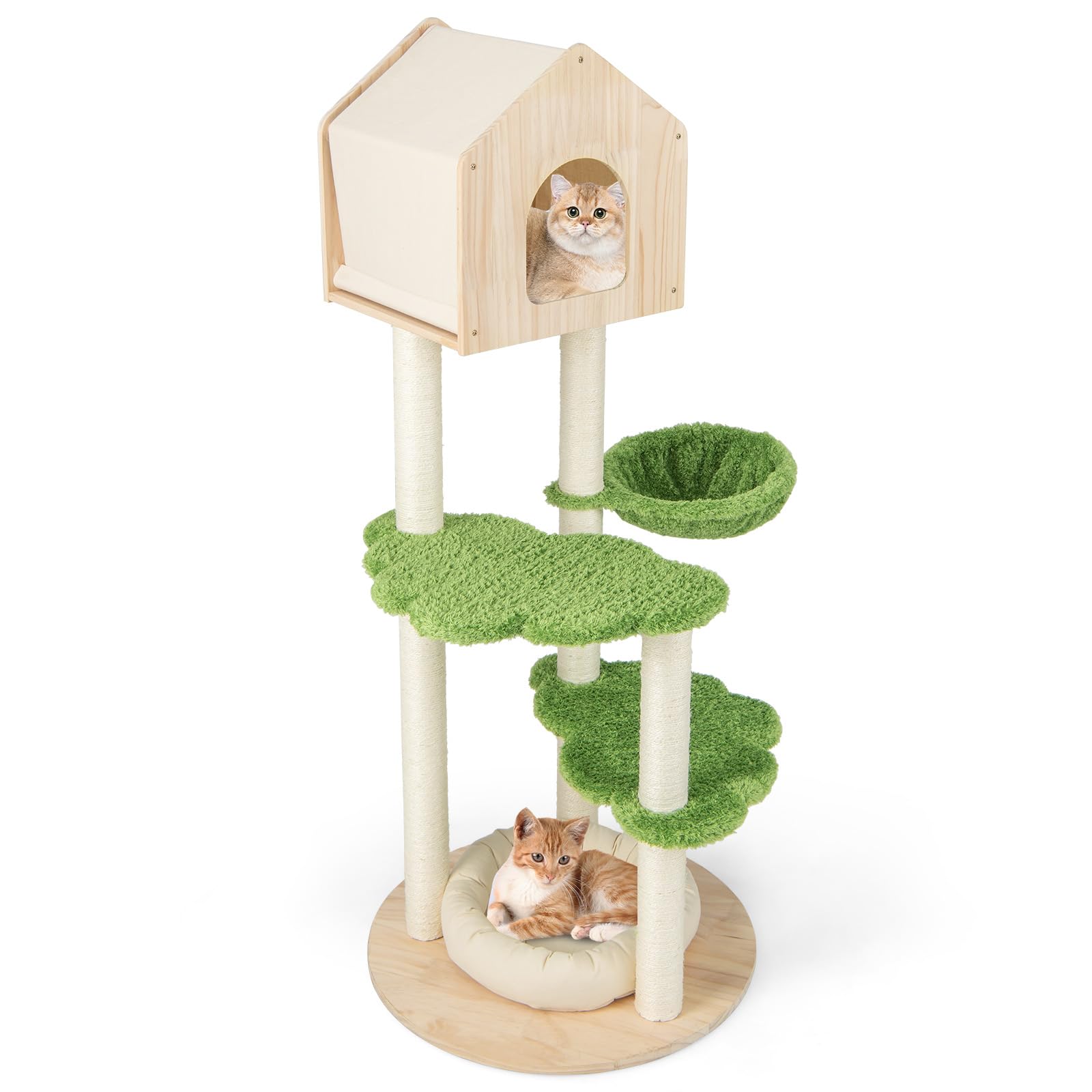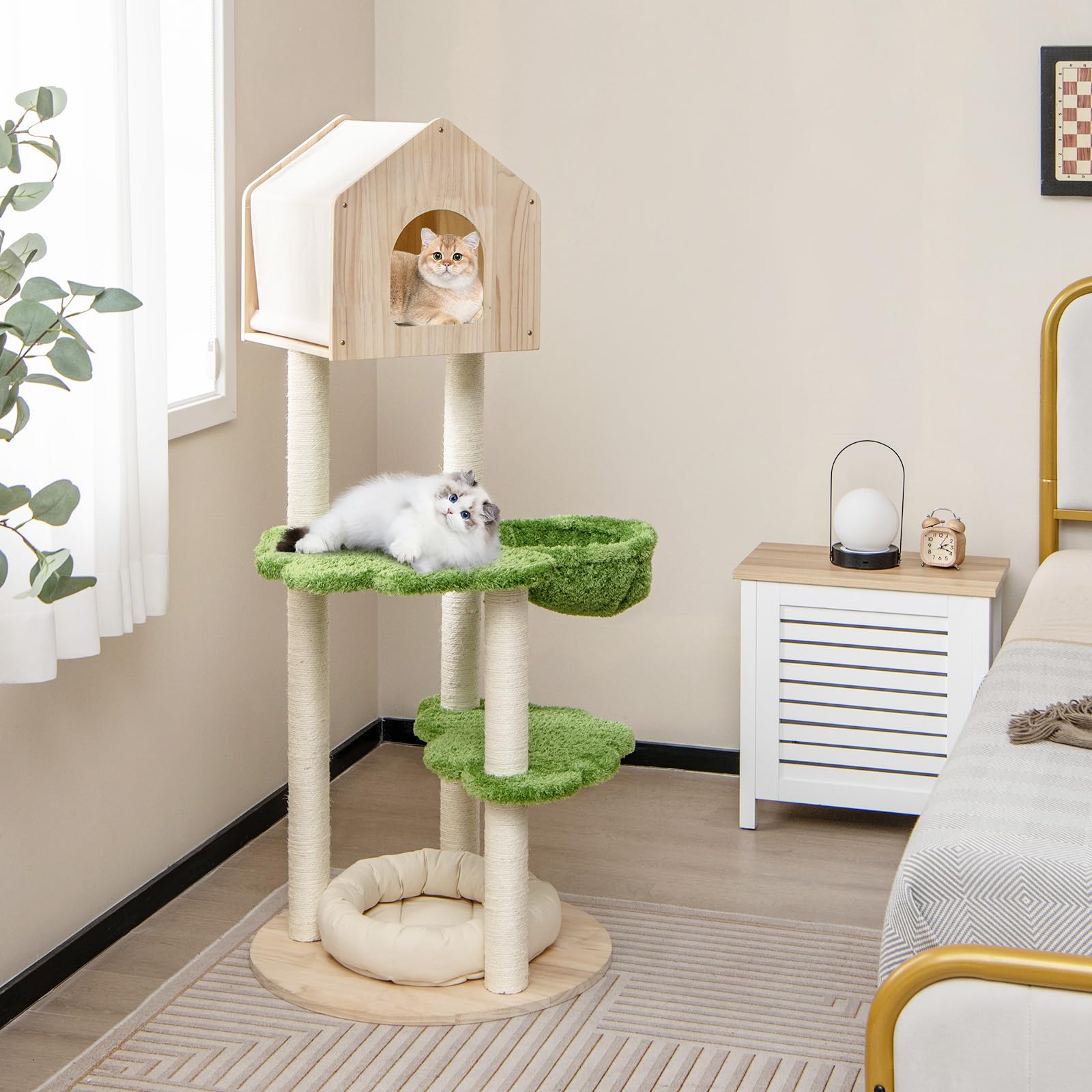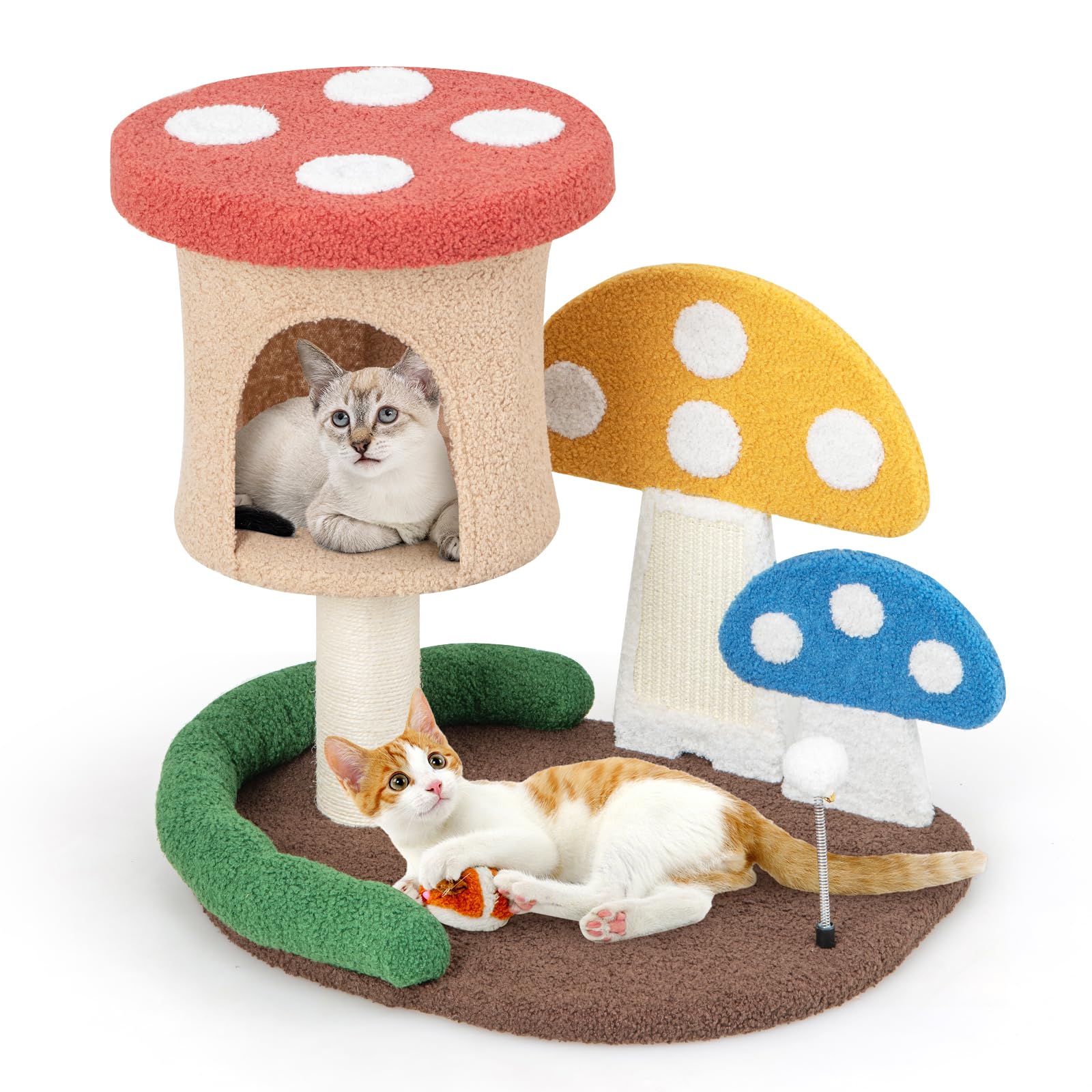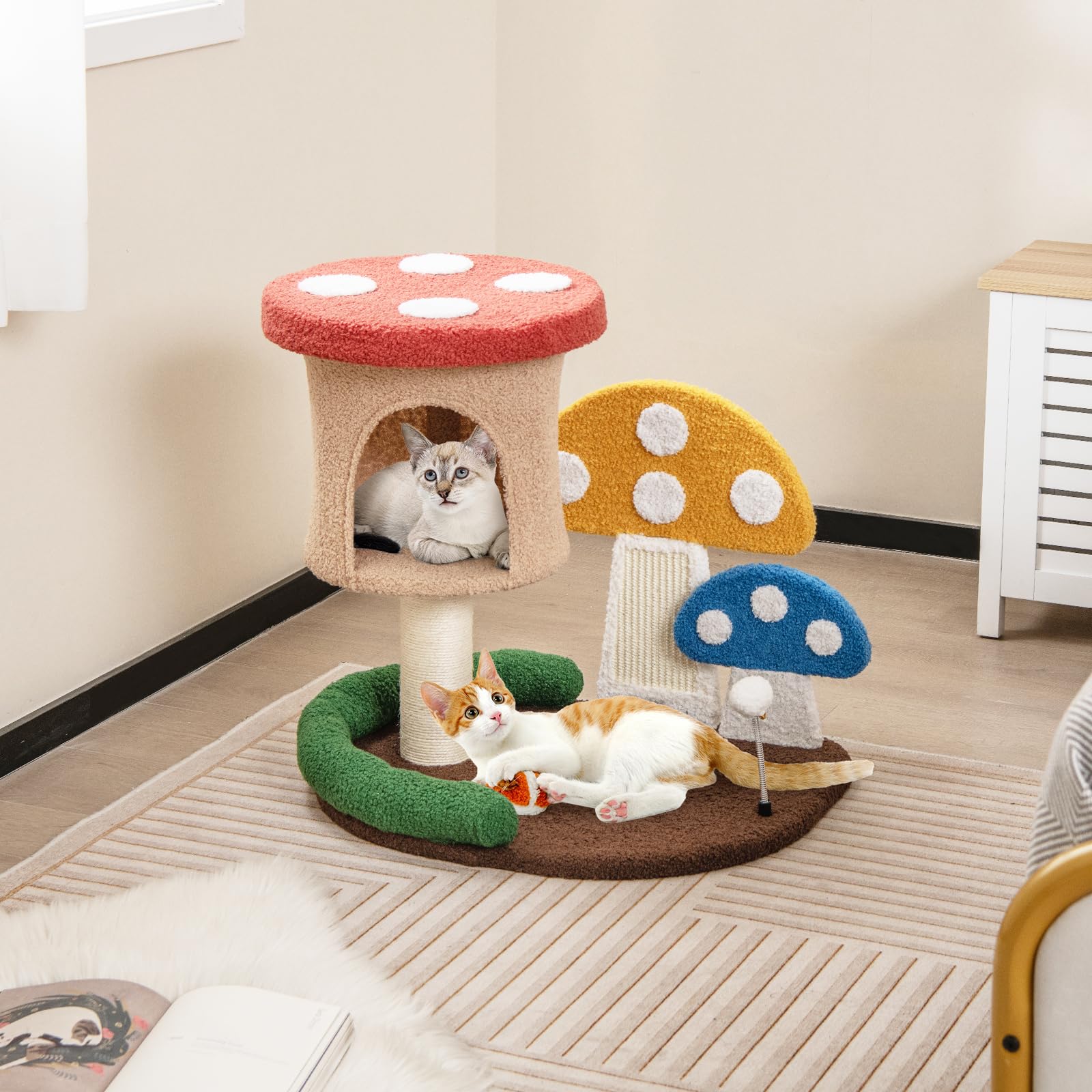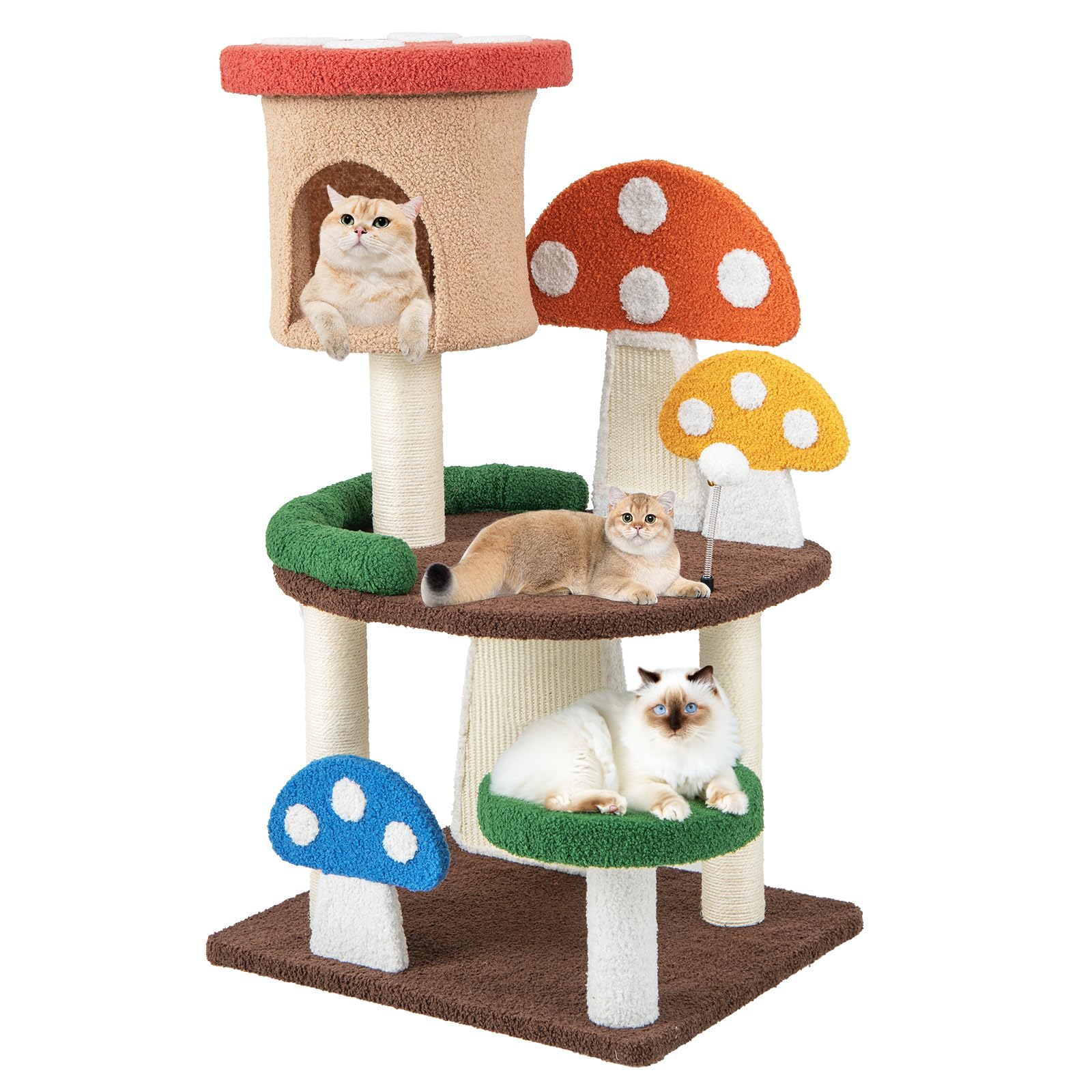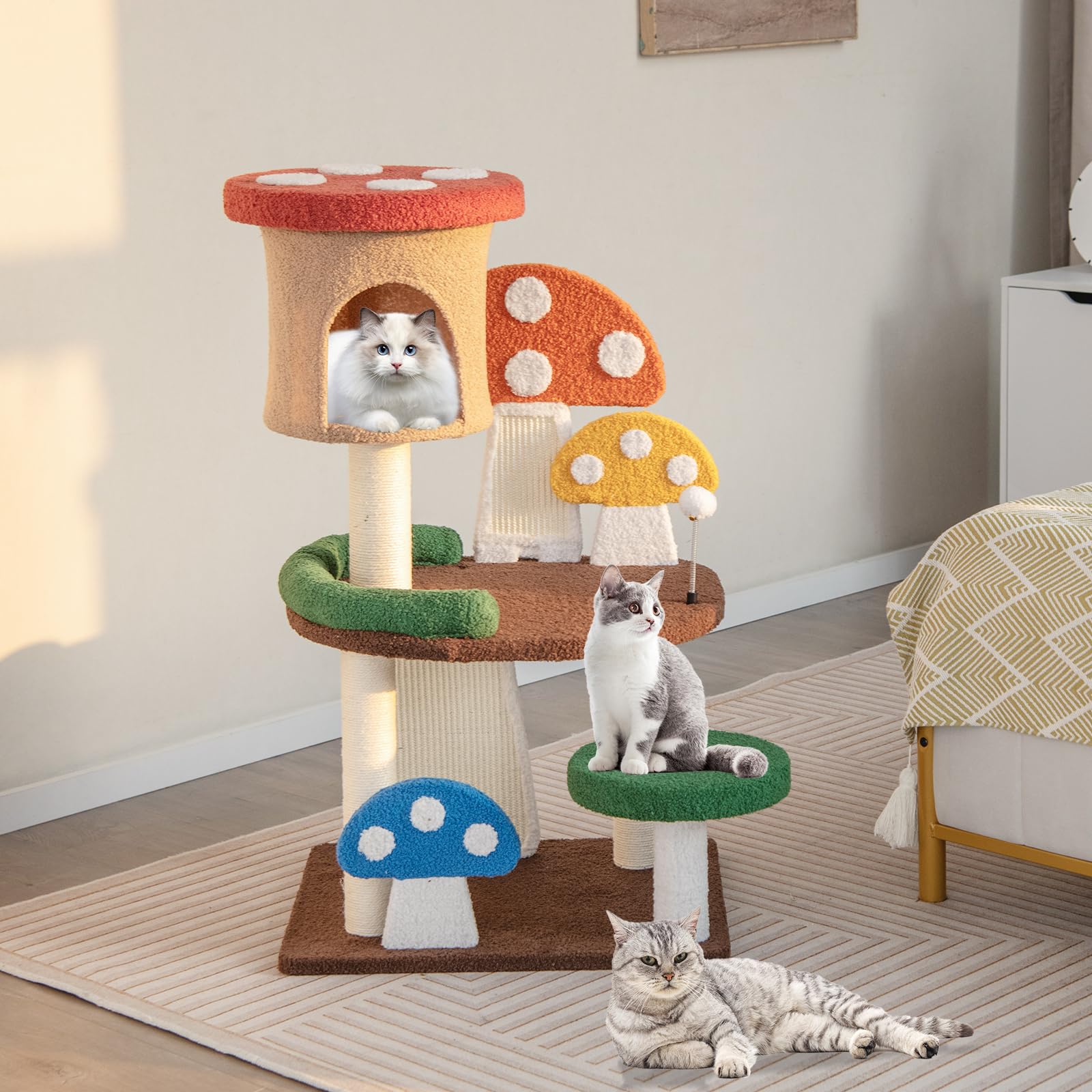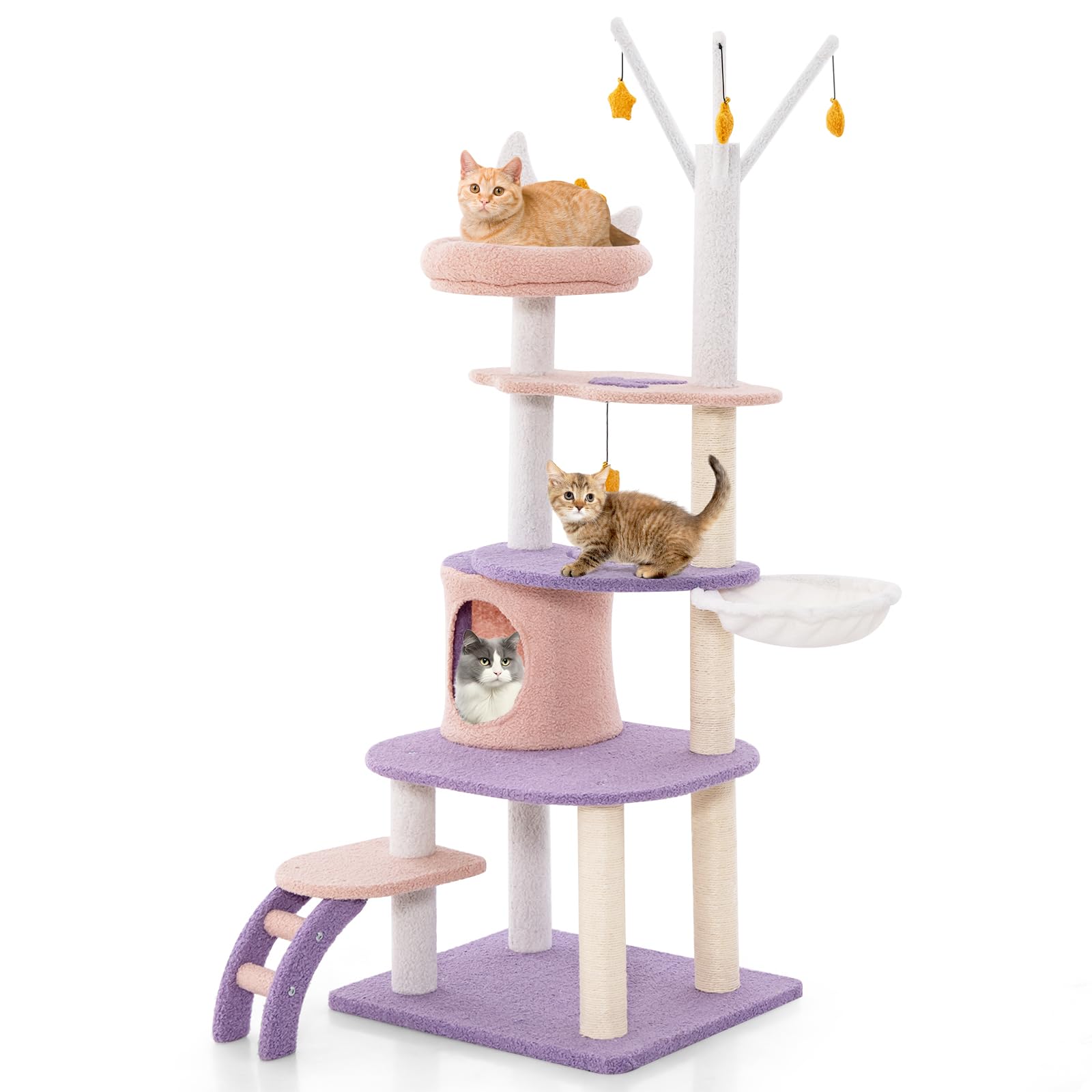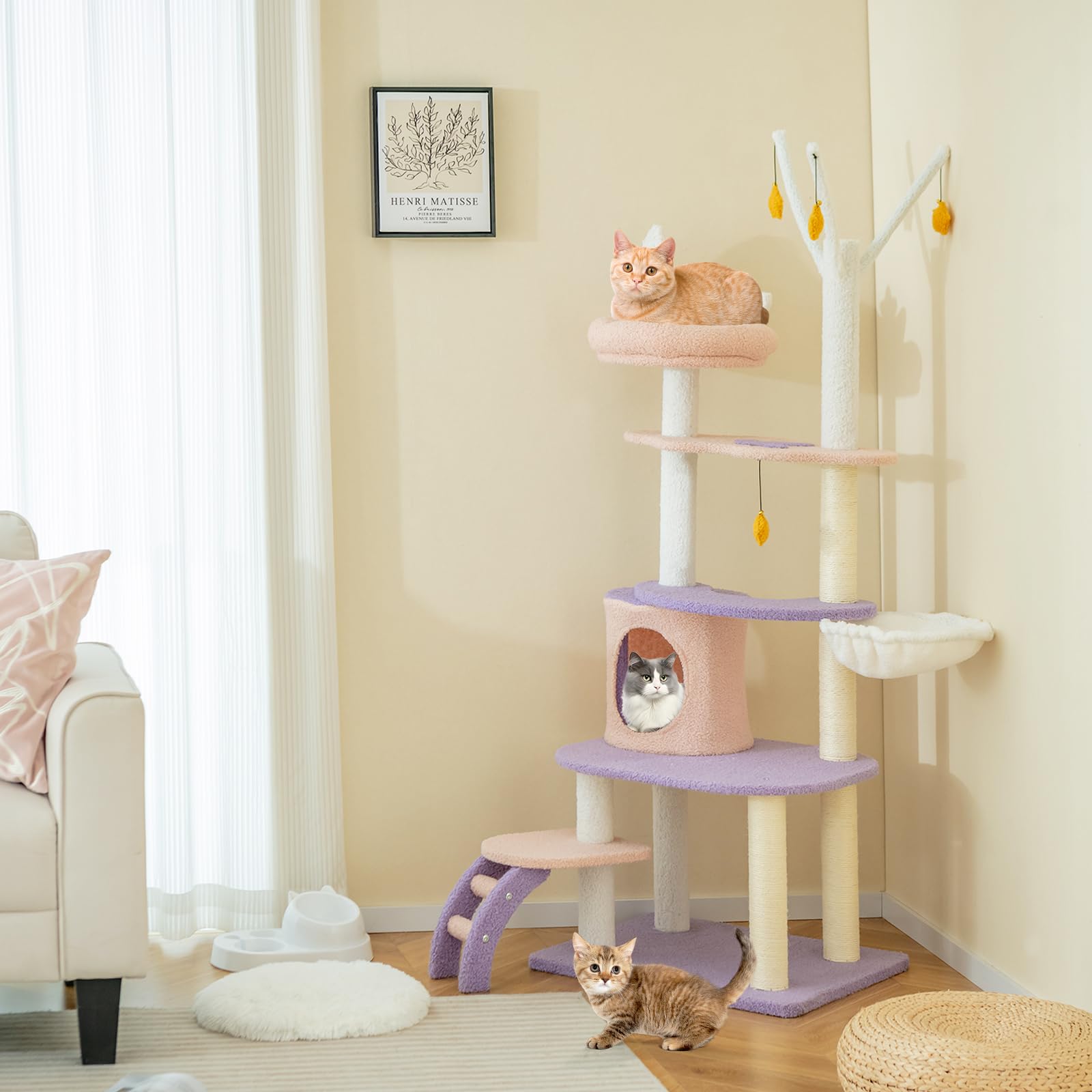Inside this Article:
- Are Cats Colorblind?
- What Colors Do Cats See Best?
- Why Cats’ Vision is Unique
- 1. Types of Photoreceptors:
- 2. Cone Sensitivity in Cats:
- 3. Sensitivity to Blue and Violet:
- 4. Comparative Functionality:
- What Colors Do Cats Like the Most?
- Are There Colors That Cats Don’t Like?
- What Type of Cat Toy Will Feline Friends Like?
What Colors Can Cats See and What Appeals to Them?
Have you ever wondered how cats see the world? Although their color vision is more limited than ours, it perfectly adapts to their needs. Today, we will look at the colors kitties can see and what they like. It also gives tips on choosing toys and accessories, like colorful cat trees, to grab their attention.
Are Cats Colorblind?
The simple answer is no, but their color vision significantly differs from ours. Felines are dichromatic, meaning they only have two types of cone photoreceptors in their eyes, compared to humans' three. This makes their vision similar to red-green colorblind humans, as they cannot distinguish red and green hues. Instead, they see the world in shades of blue, gray, and muted yellows.
Cat sight evolved this way because, as predators, they rely more on movement and contrast than vibrant color differentiation. Their exceptional ability to detect movement and navigate low-light environments is a result of this specialized vision.

What Colors Do Cats See Best?
Felines adapt their vision for survival, emphasizing movement detection and low-light performance over detailed color perception. Here’s what we know about the colors felines can and cannot see:
Blues and Purples:
Cats see blues and purples more vividly than other colors. Their short-wavelength-sensitive cones (S-cones) detect light in the blue-violet range (400–500 nm). This makes blue hues stand out in their environment, likely aiding in contrast detection.
Yellows:
Cats can see yellow to some degree. This color is in the range that their medium-to-long-wavelength-sensitive cones (M/L-cones) can detect. However, yellows may appear less vibrant than they do to humans.
Reds and Greens:
These colors are the most challenging for felines to distinguish. Without the red-sensitive cones found in human eyes, cats perceive reds and greens as shades of gray or brown. This limitation explains why people often compare their vision to red-green colorblindness.
Overall Color Spectrum:
The colors cats see are muted and less varied than the vivid spectrum visible to humans. However, they tailor their vision to their needs as predators. In the soft light of dawn or dusk, colors like blue stand out more. This helps them hunt better, as their color vision is limited.

Why Cats’ Vision is Unique
Felines’ visual system prioritizes detecting motion and contrasts over color. Rods, the photoreceptor cells responsible for vision in low light, dominate their retinas. This adaptation enables them to see in conditions humans would find nearly pitch black.
Their color vision may seem limited to us. However, it works well for a predator. This predator relies on stealth and agility, not on seeing the colors of its prey.
Cats see blue and purple better because of their special photoreceptor cells. These cells, especially the cones, are in their retinas.
1. Types of Photoreceptors:
Felines, like humans, have two types of photoreceptors in their retinas:
Rods:
Responsible for vision in low-light conditions (scotopic vision). Cats have a high density of rods, which means cat night vision is better than humans.
Cones:
Responsible for color perception in bright light (photopic vision). Felines have fewer cones than humans, which limits their color discrimination.
2. Cone Sensitivity in Cats:
Cats have two types of cones (making them dichromatic)
Short-wavelength-sensitive cones (S-cones):
These are tuned to detect blue and violet light (wavelengths around 400–500 nm).
Medium-to-long-wavelength-sensitive cones (M/L-cones):
These cones detect greenish-yellow light (wavelengths around 500–600 nm).
Unlike humans, who have three types of cones (trichromatic vision), cats lack cones sensitive to red wavelengths (600–700 nm). This makes red and its related hues nearly indistinguishable.
3. Sensitivity to Blue and Violet:
The S-cones in cats are particularly sensitive to shorter wavelengths of light (blue and violet). This sensitivity allows them to perceive these colors more clearly compared to colors in the red or green spectrum.
Absence of Red Cones:
Felines’ inability to detect long wavelengths (red light) shifts their visible spectrum toward shorter wavelengths like blue and violet.
Evolutionary Advantage:
This adaptation likely developed to focus on detecting movement and contrasts. This is especially true at dawn or dusk when blue light is more common.
4. Comparative Functionality:
Chromatic Aberration:
The shorter wavelengths, like blue and violet, are less affected by chromatic aberration in low light. This helps cats see these colors better.
Nocturnal Adaptations:
Their ability to see colors is limited. However, their eyes work well in low-light settings, where blue light is more common. This reinforces the utility of their S-cones.

What Colors Do Cats Like the Most?
Felines are naturally more drawn to blue and yellow shades. These colors stand out to them against a muted background and can capture their attention more effectively. Toys, bedding, or accessories in these hues might engage them better than items in red or green.
Are There Colors That Cats Don’t Like?
Cats do not strongly dislike specific colors. However, they do not respond well to colors they cannot see clearly, like red and green. These hues may blend into the background for cats, making objects in these colors less interesting or noticeable.
Cats may also react to contrast more than specific colors. Bright, highly contrasting patterns can stimulate their curiosity, while they might ignore overly dull or monotone items.

What Type of Cat Toy Will Feline Friends Like?
When choosing toys or furniture for your kitty, focus on their ability to see blue and yellow shades. A colorful cat tree designed with a mix of blue and yellow elements would be an excellent choice. Not only do these colors catch a cat's attention, but a cat tree also satisfies their instincts to climb, scratch, and explore.
A good cat tree has colorful platforms, hiding spots, and scratching posts. It offers visual fun and physical activity for your kitty. Look for features like:
- Blue perches or cushions
- Yellow hanging toys
- Neutral base colors like gray or beige to contrast the brighter elements
This combination can turn the cat tree into a fun, engaging centerpiece for your cat's playtime and relaxation.

Cats see colors differently than humans do. Their color vision is more limited, but it suits their needs well. This helps them as both predators and companions. Knowing that your cat likes blue and yellow is helpful.
This information can help you choose the best toys and accessories for them. A colorful cat tree in colors they can see and enjoy provides great visual stimulation and fun. It also serves a useful purpose.

